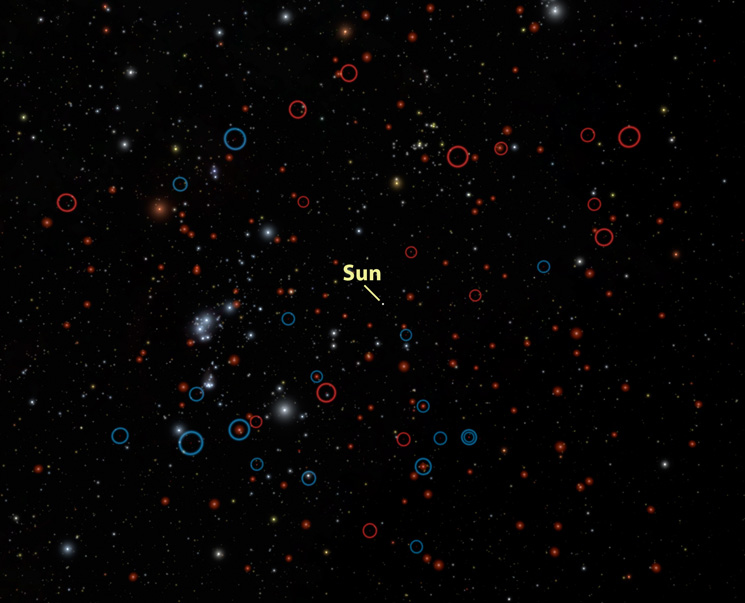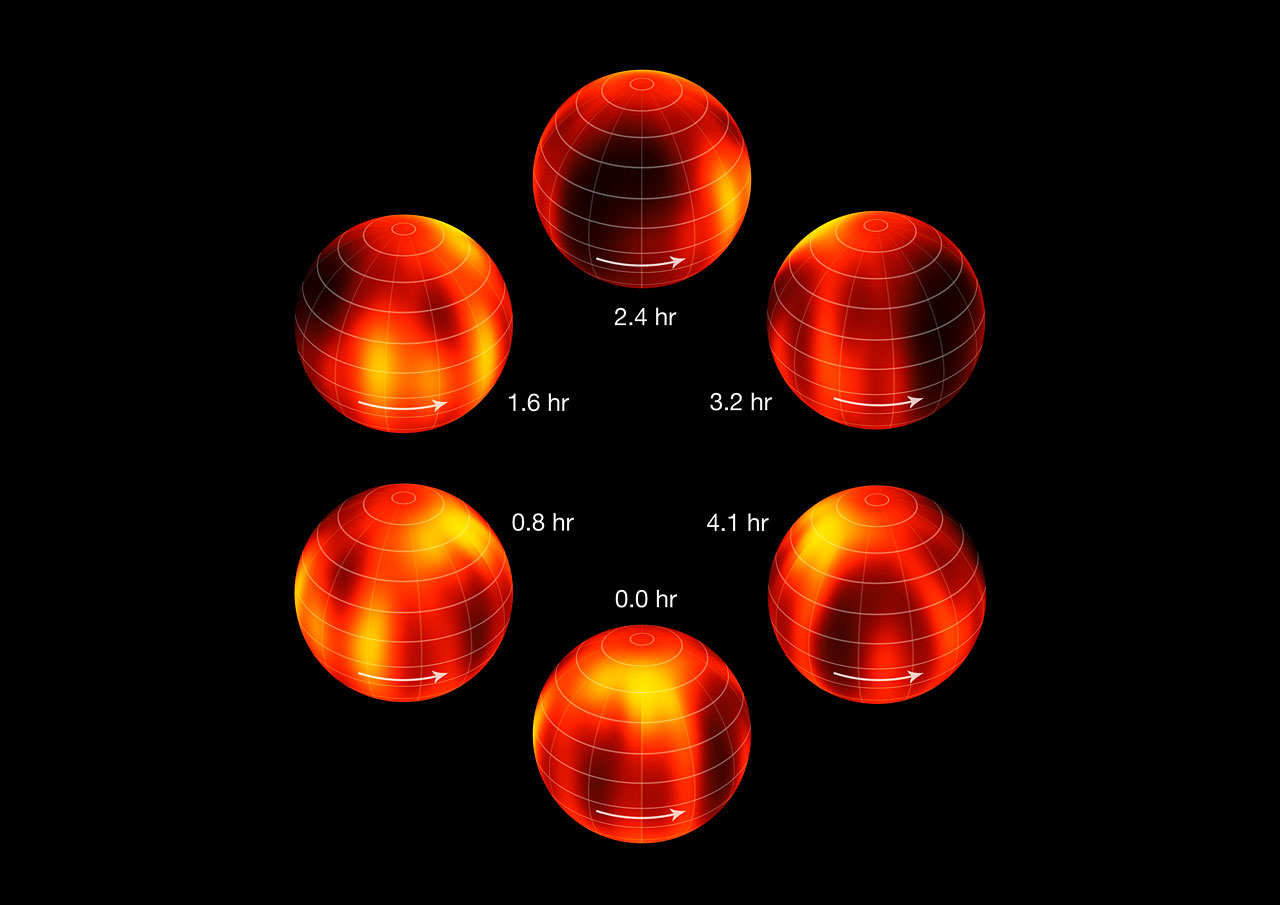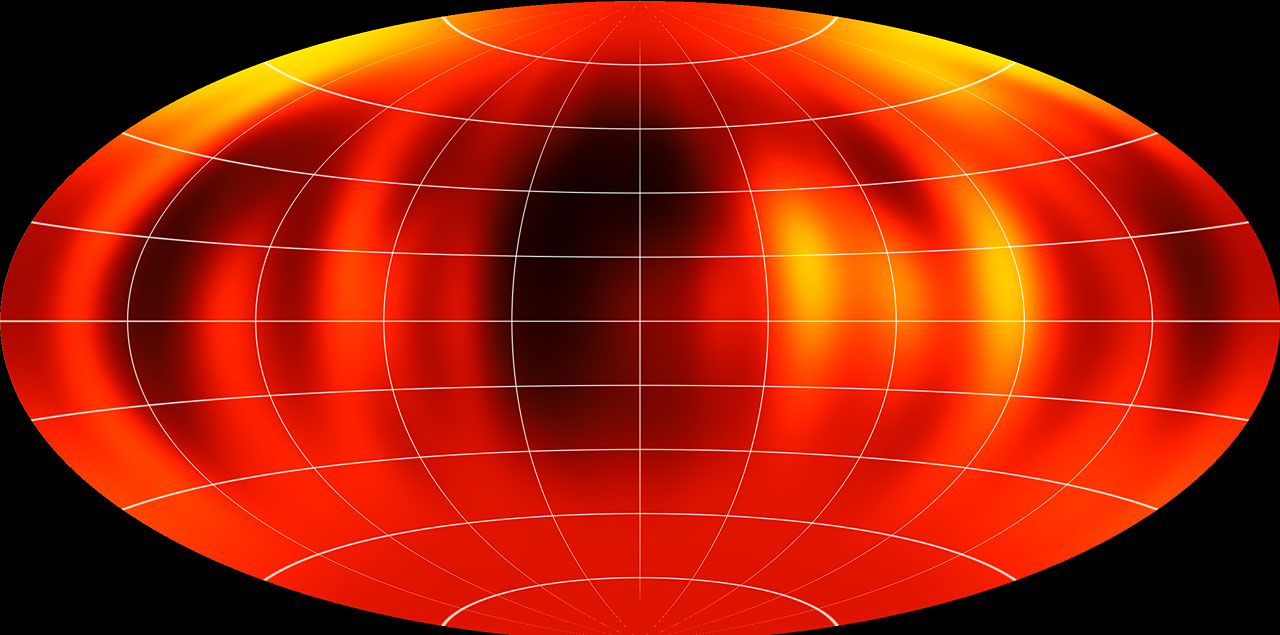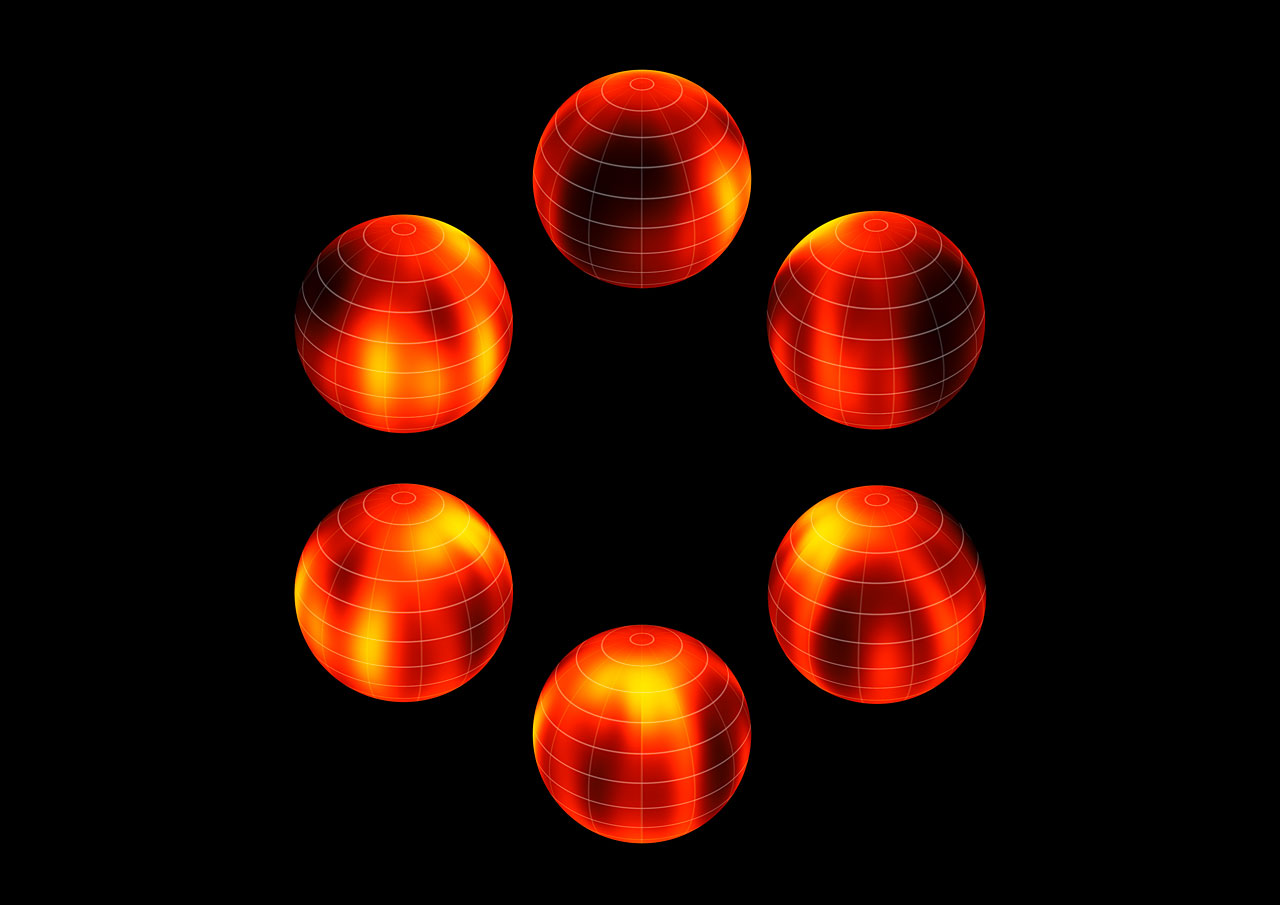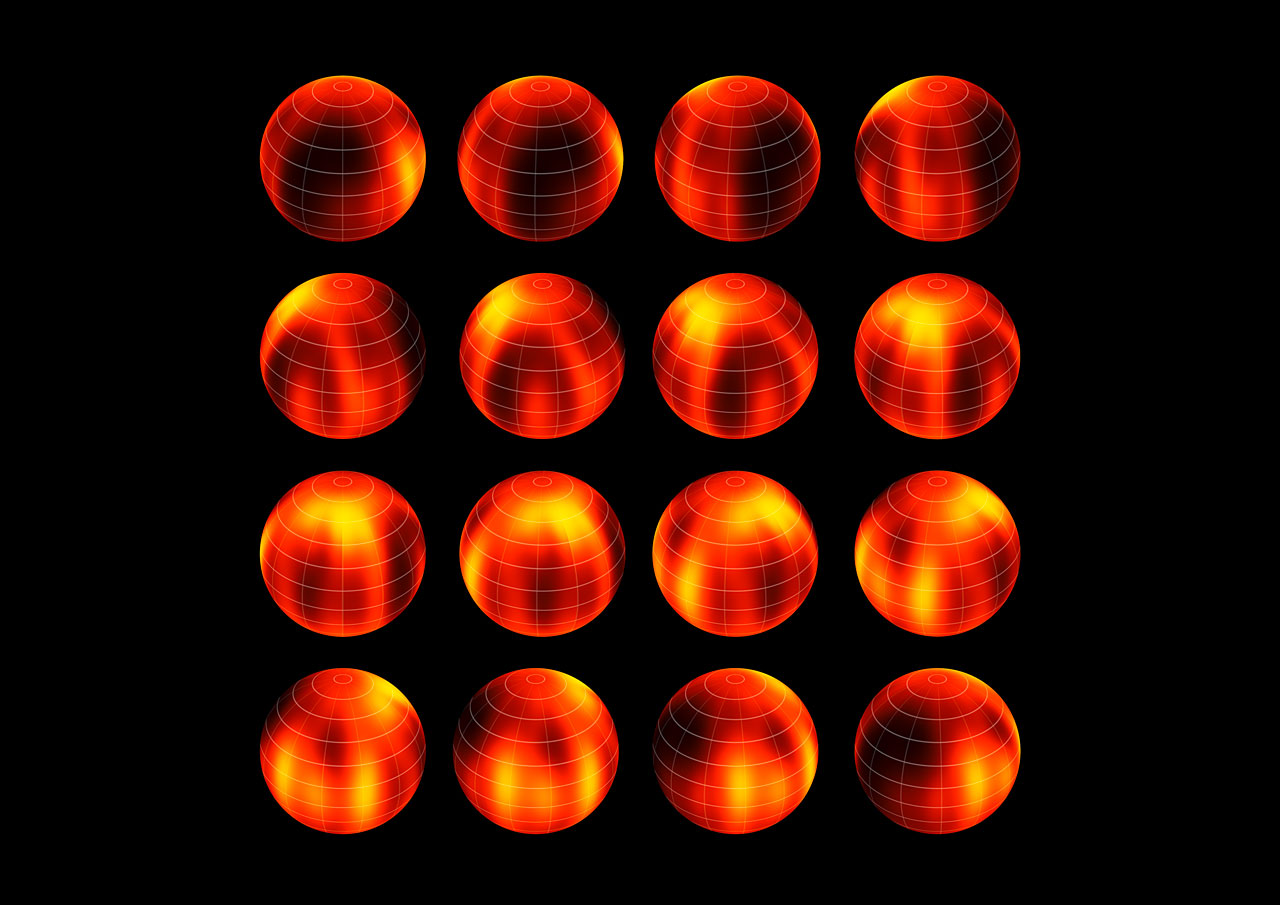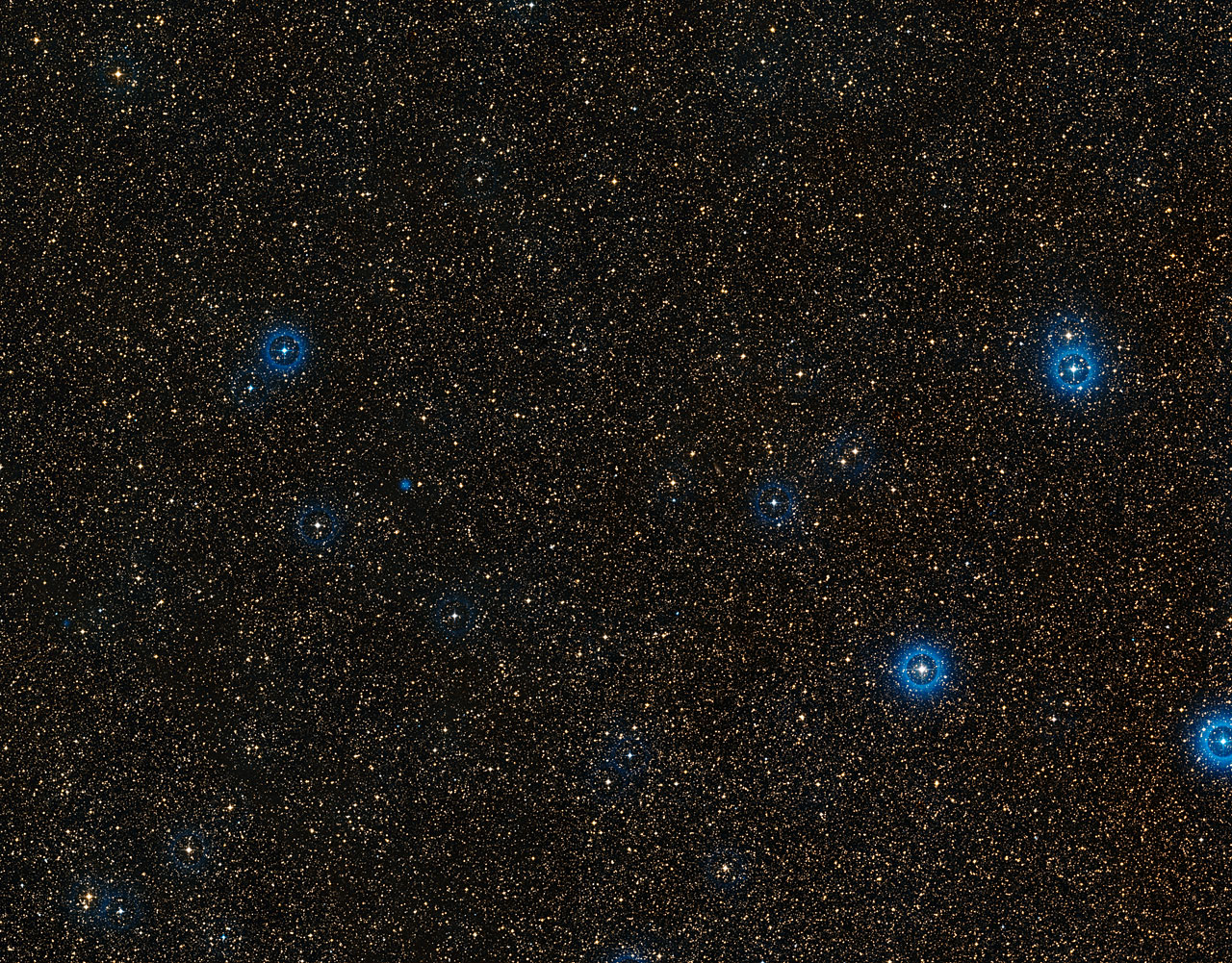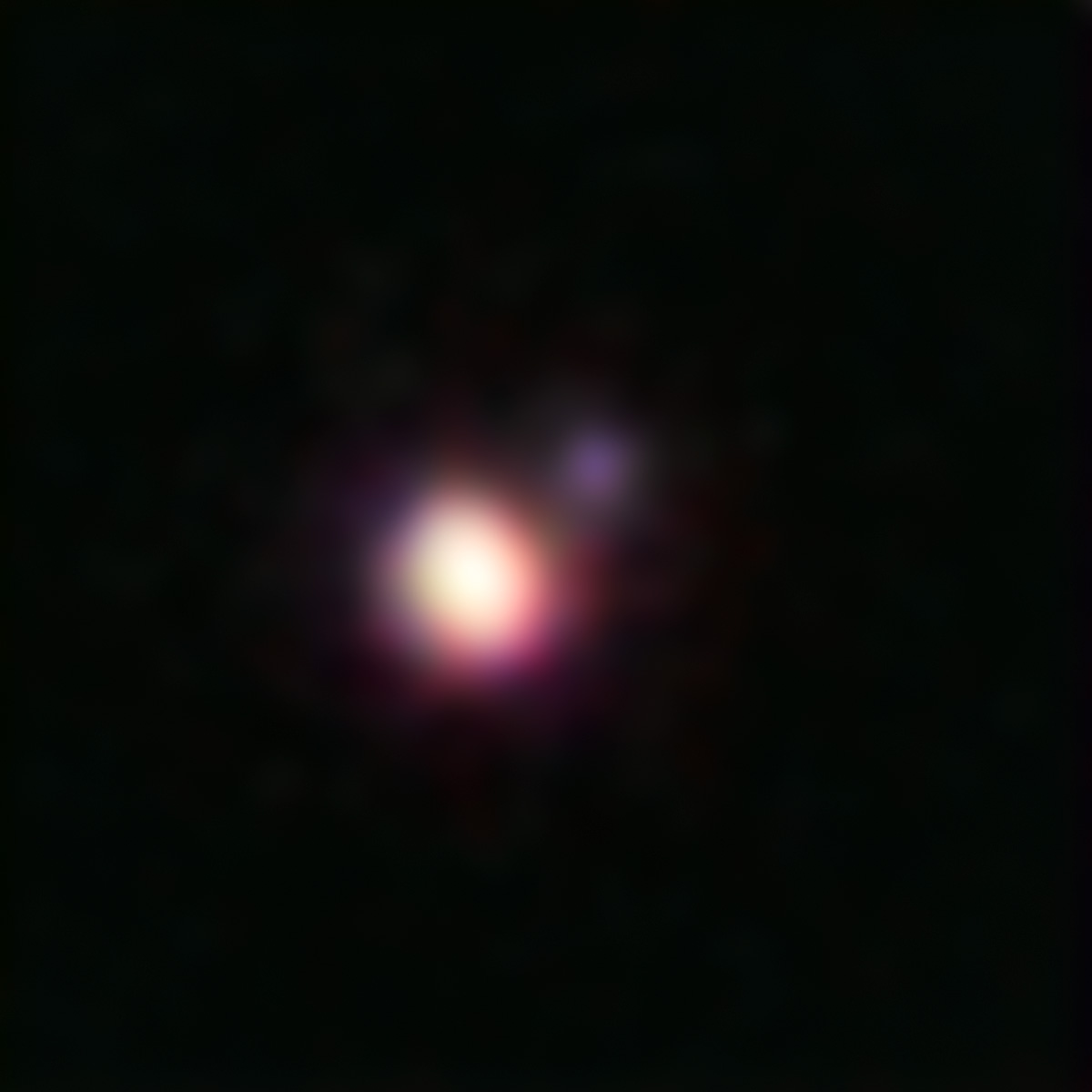Brown Dwarf Photos: Failed Stars and Stellar Misfits Revealed
WISE Discoveries of Brown Dwarfs
Brown dwarfs are oddities of space. They are neither star nor planet, but instead a comic misfit - failed stars that never burned hot enough to ignite into a full-blown star. See images of these strange objects from across the universe in this SPACE.com gallery. HERE: Our cosmic backyard as seen from 30 light-years away. Red circles indicate the discoveries of brown dwarfs by NASA's WISE space telescope.
Surface Map of Luhman 16B Recreated From VLT Observations (Annotated)
ESO's Very Large Telescope has been used to create the first ever map of the weather on the surface of the nearest brown dwarf to Earth. An international team has made a chart of the dark and light features on WISE J104915.57-531906.1B, which is informally known as Luhman 16B and is one of two recently discovered brown dwarfs forming a pair only six light-years from the Sun. The figure shows the object at six equally spaced times as it rotates once on its axis. Image released Jan. 29, 2014. [Read the Full Story Here]
Artist's Impression of Luhman 16B Recreated From VLT observations
This artist's impression is based on the first ever map of the weather on the surface of the nearest brown dwarf to Earth. An international team has used ESO's Very Large Telescope to make a chart of the dark and light features on WISE J104915.57-531906.1B, which is informally known as Luhman 16B and is one of two recently discovered brown dwarfs forming a pair only six light-years from the Sun. Note that the faint fine detail on the surface has been added for artistic effect. Image released Jan. 29, 2014. [Read the Full Story Here]
Brown Dwarfs, Strange Failed Stars, Explained (Infographic)
Brown dwarfs are not quite massive enough to ignite nuclear fusion, yet larger than known planets. See how brown dwarfs work in this SPACE.com infographic.
Surface Map of Luhman 16B Recreated From VLT Observations
ESO's Very Large Telescope has been used to create the first ever map of the weather on the surface of the nearest brown dwarf to Earth. An international team has made a chart of the dark and light features on WISE J104915.57-531906.1B, which is informally known as Luhman 16B and is one of two recently discovered brown dwarfs forming a pair only six light-years from the Sun. [Read the Full Story Here]
Surface Map of Luhman 16B
ESO's Very Large Telescope has been used to create the first ever map of the weather on the surface of the nearest brown dwarf to Earth. An international team has made a chart of the dark and light features on WISE J104915.57-531906.1B, which is informally known as Luhman 16B and is one of two recently discovered brown dwarfs forming a pair only six light-years from the Sun. The figure shows the object at six equally spaced times as it rotates once on its axis. [Read the Full Story Here]
Surface Map of Luhman 16B (16 Images)
ESO's Very Large Telescope has been used to create the first ever map of the weather on the surface of the nearest brown dwarf to Earth. An international team has made a chart of the dark and light features on WISE J104915.57-531906.1B, which is informally known as Luhman 16B and is one of two recently discovered brown dwarfs forming a pair only six light-years from the Sun. The figure shows the object at sixteen equally-spaced times as it rotates once on its axis. Image released Jan. 29, 2014. [Read the Full Story Here]
Breaking space news, the latest updates on rocket launches, skywatching events and more!
Wide-Field View Around Luhman 16AB
This wide-field view of part of the southern constellation of Vela is centred on the position of the brown dwarf pair Luhman 16AB. It was created from images forming part of the Digitized Sky Survey 2. As Luhman 16AB lies very close to the Solar System it moves relatively quickly across the sky. And as this picture was made from photographs taken many years apart the object appears twice, once as a blue spot and once as a red one! Image released Jan. 29, 2014. [Read the Full Story Here]
Brown Dwarfs Near the Sun
The locations of brown dwarfs discovered by NASA's Wide-field Infrared Survey Explorer, or WISE, and mapped by NASA's Spitzer Space Telescope, are shown here in this diagram. The view is from a vantage point about 100 light-years away from the sun, looking back towards the constellation Orion.
NASA's Spitzer Probes Weather on Brown Dwarfs
This artist's concept shows what the weather might look like on cool star-like bodies known as brown dwarfs. These giant balls of gas start out life like stars, but lack the mass to sustain nuclear fusion at their cores, and instead, fade and cool with time.
Brown Dwarf Binary CFBDSIR 1458+10
This image of the brown dwarf binary CFBDSIR 1458+10 was obtained using the Laser Guide Star (LGS) Adaptive Optics system on the Keck II Telescope in Hawaii.This is the coolest pair of brown dwarfs found so far—the colder and dimmer of the two components is a candidate for the brown dwarf with the lowest temperature ever found.
Join our Space Forums to keep talking space on the latest missions, night sky and more! And if you have a news tip, correction or comment, let us know at: community@space.com.

Space.com is the premier source of space exploration, innovation and astronomy news, chronicling (and celebrating) humanity's ongoing expansion across the final frontier. Originally founded in 1999, Space.com is, and always has been, the passion of writers and editors who are space fans and also trained journalists. Our current news team consists of Editor-in-Chief Tariq Malik; Editor Hanneke Weitering, Senior Space Writer Mike Wall; Senior Writer Meghan Bartels; Senior Writer Chelsea Gohd, Senior Writer Tereza Pultarova and Staff Writer Alexander Cox, focusing on e-commerce. Senior Producer Steve Spaleta oversees our space videos, with Diana Whitcroft as our Social Media Editor.
